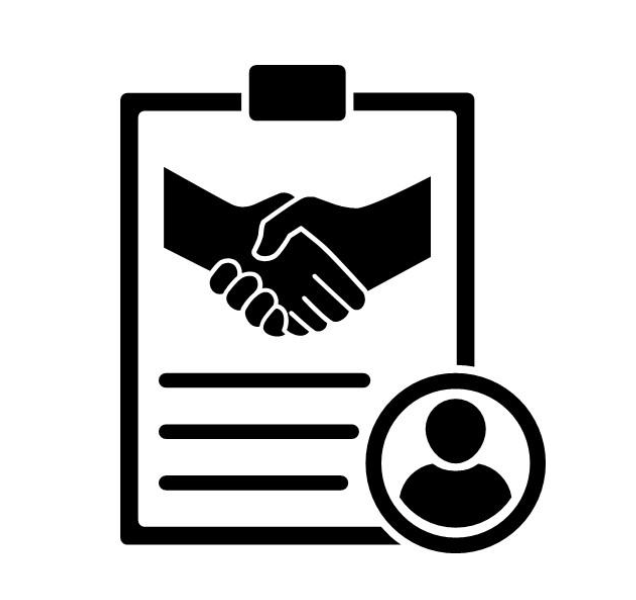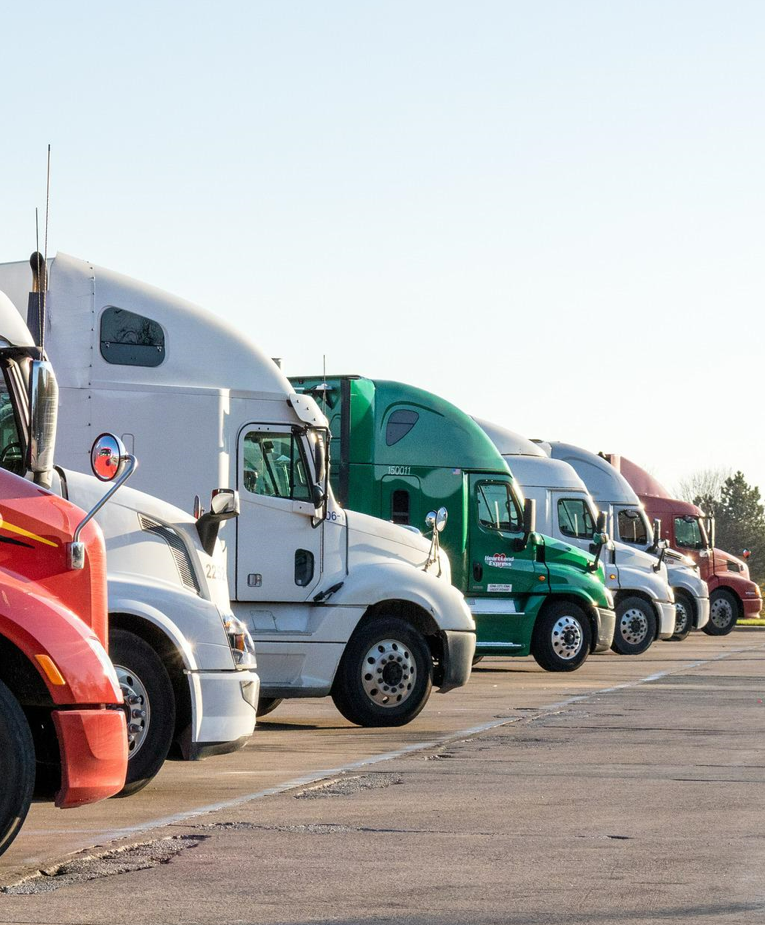


Why I Left Freight Brokerage for Tech Start-Up!
Working as a successful freight broker, for over a decade, most of my days were spent wheeling and dealing over the phone or via email finding trucks to haul loads. My compensation was based on how much spread or margin I negotiated per load. The truth is, to be successful, most brokers focus on moving loads with the biggest margin. Oftentimes, different customers ship loads using the same lane multiple times per day. For example, many customers use Chicago to Memphis. Customer A is locked in at $2,000, while Customer B locks in at $1,000. As a broker, I know that carriers would accept Chicago to Memphis for $900. Therefore, my attention, like most brokers, would be focused on matching a carrier to Customer A’s load, which means more profit for my brokerage, and my own pocket! Customer A: pays $2,000 and carrier charges $900= $1,100 spread Customer B: pays $1,000; carrier charges $900= $100 spread Unfortunately, neither customer A nor B knows what the market demands which means they are either overpaying to haul the freight or in some cases under paying to haul freight which usually leads to horrible service levels. Without data transparency, shippers never know the true market cost or what carriers demand to haul loads. And this is exactly what brokers want to happen to remain profitable. Re-Inventing Freight Procurement But as supply chains began to embrace technological advancements, specifically AI and automation, I realized that machine learning could find, vet, and transact with carriers much faster than I ever could. That’s when it finally occurred to me that I could soon be out of...
How Has Technology Modernized Trucking?
We live in a world of fast-paced technological advancements, which have fundamentally shifted the way things are done. Most companies have embraced technology to streamline critical processes to help reduce COGs. For workers, technology has helped make job duties faster and easier to perform. Due to the increased level of disruption, innovation has had a significant imprint on the supply chain. The trucking industry has seen many recent advancements which have provided benefits for trucking companies, truck drivers, and shippers. Let's dive a little deeper. Improved safety: advanced safety features such as lane departure warnings, collision avoidance systems, and electronic stability control have reduced trucking accidents. Better Customer Service: GPS and telematics systems track trucks in real-time so everyone knows the exact location and status of trucks leading to improved efficiency, reduced downtime, and better customer service. More loads: AI-powered software dynamically matches shipper loads with compliant carriers who are notified via mobile app. With freight brokers eliminated, carriers bid directly on loads resulting in more money in the carrier’s pocket. Increased efficiency: ELDs have replaced paper logs, making it easier for drivers to comply with hours-of-service regulations. ELDs also provide more accurate data on driver behavior and performance, helping companies to improve safety and efficiency. Stronger Decision Making: collecting and analyzing data means stronger decisions related to operations, including driver behavior, fuel usage, and maintenance records to improve efficiency, reduce costs, and enhance safety. Greater connectivity: Wi-Fi allows drivers to communicate with families and colleagues and access important info while on the road. So no matter what company you work for, or what job you perform, chances are you...
Can Shippers & Carriers Both Win in Freight Procurement? Technology Says… Yes They Can!
Freight logistics knew one truth for decades: money was a game, and someone won while someone else lost. For years, freight brokers have strategized to make the biggest amount of money they could, generally at the expense of one of the other players. The market would decide who had an advantage in each round, and that advantage was subject to change at the drop of a hat or, more accurately, at the occurrence of any disaster, legislation, or shift in the economic balance, big or small. But what if smart technology came along and advanced traditional freight procurement thinking, helping both the shipper and carrier win? Guess what…. smart technology has finally arrived! AI-Powered Freight Procurement Technology We know that technology benefits humanity by putting the world in the palms of our hands. We have the benefit of being connected, globally, to anything we want to purchase, anywhere we want to go, friends and family we want to talk to or discover, and anything we want to learn. When it comes to logistics, there is no difference. Technology instantly connects freight to compliant carriers whenever and wherever needed, so both the shipper and carrier come out on top. Technology does us the favor of removing waste. When freight brokers serve as the moderator of the game, it takes shippers hours to find, vet, and transact with new carriers. AI-powered technology dynamically matches shippers’ loads to compliant carriers in seconds using configured attributes. Only carriers who pass the pre-qualification algorithms are given a chance to bid directly on a load. With the middleman eliminated, the carrier makes more money in their...
Onboard New Carriers in Seconds Instead of Hours
Freight procurement is a critical process within the supply chain. The key to success is moving goods on time while paying a fair market price, so end customers’ sales orders arrive on schedule. One of the primary puzzle pieces to freight procurement is securing compliant carriers (trucks and drivers) to move the freight. Unfortunately, the carrier onboarding process is cumbersome. According to Dean Corbolotti, VP of Managed Services at Sleek Technologies, “Onboarding new carriers correctly can take hours at best. And with everything else the transportation team has to juggle, it’s no wonder they limit the number of carriers they do business with." Finding and Vetting Carriers Finding and vetting carriers is a time-consuming process, which is required before any carrier can be added into a shipper's network. Traditionally, shippers would go to a public board and look for carriers based on specific criteria. They would dig into things like compliance, safety, accountability (CSA) scores, insurance/ liability, and operating authorities. Once a carrier passes the initial screening process, forms and data entry are required to solidify the new partnership which slows down the process even more. Automating Carrier Onboarding Updating the manual process of finding, vetting, and onboarding new carriers with automation software makes the process much faster. It goes from hours to seconds. Using a shipper’s specific load attributes, along with the carrier’s attributes, AI/ML algorithms go to work to dynamically match loads to compliant carriers. All of the onboarding leg work is done dynamically, eliminating the need for manual research. Plus with automatic daily compliance checks, shippers gain peace of mind! Expanding Freight Capacity Without automation, shippers rely...
Port of Oakland Strike, What’s Next?
On November 2nd, the flow of goods was halted for several hours as hundreds of International Longshore and Warehouse Union workers walked off the job at the Port of Oakland due to stalled contract negotiations which demanded better pay and benefits. By 6 PM, dock workers returned to the ports and operations resumed. Unfortunately, this serves as yet another stark reminder that logistics is unpredictable– especially when the front line is unhappy. Dock & Warehouse Worker Threats wsws.org reported that 83% of Port of Oakland clerks (200 out of 240) have outstanding wage claims dating back to June. Arbitration isn’t possible right now because there is no signed union agreement. 22,000 West Coast longshoremen are working without a signed contract. It’s surprising that union officials have been successful in suppressing US-based strikes, dodging a major bullet on September 16th when 200 Canadian dock and warehouse workers went on strike shutting down ports in Vancouver, British Columbia. Had US workers joined the strike, all West Coast ports from Canada to Mexico would have been shut down. Fast forward to late October, when 800 Port of Mobile Longshoremen decided not to strike with promises of returning to the bargaining table. Unfortunately, West Coast issues are not isolated. Wages, benefits, job security, and safety are global issues for dock workers who have protested in Germany, South Africa, England, Canada, and Australia. Independent Truck Driver Threat In addition to longshoremen's instability, we also need to keep in mind independent truck drivers. If you recall, independent truck drivers demonstrated at LA and Oakland ports in mid-July because they opposed the AB5 legislation (reclassifying drivers as...
